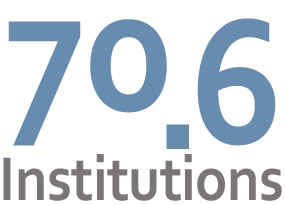blended and online learning
| by blaine smith and cynthia j. brame | print version |
| cite this guide: smith, b., & brame, c. (2014). blended and online learning. 瑞士vs喀麦隆走地 2022年世界杯中国小组赛积分. retrieved [todaysdate] from //www.imrbdigital.com/guides-sub-pages/blended-and-online-learning/. |
online courses are those in which at least 80 percent of course content is delivered online. blended (sometimes called hybrid) instruction has between 30 and 80 percent of the course content delivered online with some face-to-face interaction. blended and online courses not only change how content is delivered, they also redefine traditional educational roles and provide different opportunities for learning. as described by palloff and pratt (2013):
|
|
this teaching guide presents research on the learning possibilities offered through online and blended learning, as well as effective practices for facilitating online courses. platform-specific resources and activities can also be found at the vanderbilt 2022年世界杯中国小组赛积分’s bold website.
- what does the research say about blended and online learning?
- what are elements that can make blended and online learning successful?
- what are good practices to use?
- resources
what does the research say about blended and online learning?
online learning is one of the fastest growing trends in educational uses of technology. a recent survey (allen & seaman, 2013) of more than 2,800 colleges and universities reported the following:

|
more than 6.7 million students in higher education were taking at least one online course during the fall 2011 term, an increase of 570,000 students over the previous year; |
 |
32% of higher education students now take at least one course online;
|
 |
the number of public institutions offering complete online programs increased from 48.9% in 2002 to 70.6% in 2012;
|
 |
77% of academic leaders rate the learning outcomes in online education as the same or superior to those in face-to-face classrooms (allen & seaman, 2013).
|
in 2010, the u.s. department of education released a meta-analysis and review of empirical studies focused on online learning in k-12 schools and higher education from 1996-2008. their findings revealed that “students in online conditions performed modestly better, on average, than those learning the same material through traditional face-to-face instruction” (p. xvi). in addition, they reported that blended instruction combining online and face-to-face elements had a larger advantage than purely online instruction (means, toyama, murphy, bakia & jones, 2010).
although these results suggest that blended learning environments can provide a learning advantage when compared to purely face-to-face instruction, the researchers emphasized the findings “do not demonstrate that online learning is superior as a medium…it was the combination of elements in the treatment conditions (which was likely to have included additional learning time and materials as well as additional opportunities for collaboration) that produced the observed learning advantages” (p. xviii, original emphasis). in other words, it’s important for the instructor to create an interactive, supportive, and collaborative learning environment for students to reap the potential benefits afforded by online learning. specific tips for facilitating an effective blended or online class can be found in the good practices section of this teaching guide.
what are elements that can make blended and online learning successful?
as noted above, the research suggests that when facilitated effectively, online education can not only match, but also surpass traditional face-to-face learning (means et al., 2010). here are some of the potential benefits of online education:
- learner-centered education: palloff and pratt (2013) explain that an effective online instructor is someone “who is open to giving up control of the learning process” by making students active participants in their learning process (p. 24). a learner-centered approach acknowledges what students bring to the online classroom—their background, needs, and interests—and what they take away as relevant and meaningful outcomes. with the instructor serving as facilitator, students are given more control and responsibility around how they learn, including the opportunity to teach one another through collaboration and personal interactions (palloff & pratt, 2013).
- collaborative & interactive learning: research has found that online instruction is more effective when students collaborate rather than working independently (means et al., 2010; schutte, 1996). there are a variety of ways for students to collaborate online, including synchronous and asynchronous discussions and small group assignments. in addition, the relative anonymity of online discussions helps to create a “level playing field” for quieter students or those from typically marginalized groups. when posed questions in advance, students have the opportunity to compose thoughtful responses and have their voices heard, as well as respond to one another in a manner not usually afforded by face-to-face instruction (kassop, 2003).
- metacognitive awareness: since online learners have more autonomy and responsibility for carrying out the learning process, it’s important that students understand which behaviors help them learn and apply those strategies proactively. this awareness and knowledge of one’s personal learning process involves increased metacognition—a key practice for student success (bransford, brown & cocking, 2000).
- increased flexibility: online learning offers more flexibility because students can control when and where they learn. by self-monitoring their time and pacing, students are able to spend more time on unfamiliar or difficult content (aslanian & clinefelter, 2012).
- immediate feedback: online learners generally have greater access to instructors via email and are able to have questions answered by their peers in a timely fashion on discussion boards. in addition, online tests and quizzes can be constructed with automatic grading capability that provides timely feedback (kassop, 2003). immediate and continual feedback throughout the learning process is beneficial for gaining understanding of difficult concepts, as well as triggering retrieval mechanisms and correcting misconceptions (thalheimer, 2008).
- multimodal content: the internet provides an abundance of interactive and multimodal materials that can be used to increase engagement and appeal to diverse learners. click here to learn about specific ways to deliver multimodal content online, including through videos, podcasts, screencasts, video conferencing, and presentation software.
what are good practices to use?
designing your online course
- know your learner: a recent survey of 1,500 individuals nationwide, who were recently enrolled, currently enrolled, or planning to enroll in an online course found that a wide variety of students were drawn to online learning (aslanian & clinefelter, 2012). however, they also identified the following key themes in online students’ responses:
- most online students have several responsibilities in life, so they seek convenience and flexibility when furthering their education. millions of post-secondary students have turned to online education because it enables them to fit education around their work and family responsibilities and to study anytime and anywhere (p. 16).
- online students unquestionably value the independence, self-direction, and control online education offers them. among several factors that drive them to online programs, students most often point to “the ability to study when and where i want” and “the ability to study at my own pace” (p. 17).
as you design your course, it’s important to develop as comprehensive a picture as possible of the specific students who will be enrolling in the class (angelino, williams & natvig, 2007). gaining a sense of their prior knowledge and technology competency will help you to know what supports they will need and tailor your instruction accordingly. a few ways to gain these insights include asking students to complete an online survey, concept inventory, or pre-assessment. in addition, students can reflect on their prior knowledge and experiences through an online discussion or blog post.
- develop learning goals: as with face-to-face instruction, it’s imperative to begin with the end in mind by developing learning goals first (froyd, 2008). ask yourself, what are the key concepts and/or skills students need to master by the end of the course? the answer to this question will help in developing course content, activities, and assessments that align with your learning goals, as well as choosing the appropriate technology (caulfield, 2011).
- have clear expectations: present clear guidelines for participation in the class, as well as specific information for students about course expectations and procedures. in addition, use rubrics to clearly communicate learning objectives and grading criteria for each learning activity in the course (e.g., quality online discussions) and incorporate them into student assessments (palloff & pratt, 2013). lauren palladino’s online module for a graduate astronomy class is a great example of how to present clear expectations early on.
organizing course content
- provide an obvious path through the material, and make sure guideposts are clear to the student. savery (2005) explains that organization is essential since online learners need to fit the course into their crowded schedules. he emphasizes the importance of posting course assignments and due dates early and having clear directions. shea and colleagues (shea, fredericksen, pickett & pelz, 2003; shea, pickett & pelz, 2003) also explained the importance of clearly labeling and organizing course-level and section-level materials in order to create a path that students can follow.
- organize the content in logical units, or modules, in which each module is organized around a major topic and contains relevant objectives, material, and associated activities. in the introduction to the module, include information about how long the student should expect to spend working on the module. this helps to keep students moving along at a similar pace (shea, fredericksen, pickett & pelz, 2003; shea, pickett & pelz, 2003). the course demo from boston university here illustrates this modular organization.
- within each module, present content in chunks that are easily digestible (smith, 2008).
- when presenting text, format the content for the web by breaking it into short paragraphs and using headings, bullets, graphics and other formatting devices that make webpages easier to read and comprehend. the “7+/-2”instructional design rule of thumb, based on the work of psychologist george miller, suggests inclusion of 5 to 9 pieces of information in a segment. this self-paced asynchronous course from uc-irvine demonstrates several of these principles.
- when presenting audio or video, include a brief description and information about the length. keep the segments short, from 2-15 minutes, to help maximize listeners’ retention (smith, 2008). strategically chunking content helps students to absorb the information, avoiding information overload and exhaustion (garrison, anderson & archer, 2001).
- help your students digest the chunks of material by providing short recall or application questions after each one. research has demonstrated the critical role of retrieval practices for conceptual learning (karpicke & blunt, 2011; karpicke & roediger, 2008).
facilitating online learning
- promote metacognitive awareness. since online learners have more autonomy and responsibility, it is crucial that are supported in planning, monitoring, and assessing their understanding and performance (bransford, brown, & cocking, 2000). as mentioned earlier, providing clear expectations and a clear path through the material can help students monitor their pace. in “promoting student metacognition,” tanner (2012) offers a handful of adaptable specific activities for promoting metacognition, including pre and post-assessments, reflective journals, and questions for students to ask themselves as they plan, monitor, and evaluate their thinking.
- maintain a social presence: stay present and be responsive to student needs and concerns (savery, 2005). the instructor should engage in a balanced level of participation and communication—both publicly and privately—so students know he or she is engaged and available. this includes modeling good participation by frequently contributing to discussions through responding to students’ posts and asking further questions. the instructor is instrumental for creating a warm and inviting atmosphere that promotes an online sense of community (garrison & vaughan, 2008; jiang & ting, 2000).
- promote collaboration: as described by palloff and pratt (2013), “collaborative learning processes help students achieve deeper levels of knowledge generation through the creation of shared goals, shared exploration, and a shared process of meaning making. in addition, collaborative activity can help to reduce the feeling s of isolation that can occur when students are working at a distance” (p. 39). collaborative learning can be promoted through a variety of activities, including small group assignments, case studies, simulations, and group discussions.
- promote active learning: chickering and ehrmann (1996) explain that “learning is not a spectator sport…[students] must talk about what they are learning, write reflectively about it, relate it to past experiences, and apply it to their daily lives. they must make what they learn part of themselves” (p. 5). keeping in mind the characteristics of online learners, it’s also important to make tasks authentic for students. that is, complex tasks related to real-life experiences that can also be applied to future activities (woo, herrington, agostinho & reeves, 2007). here are some specific ideas for online activities.
- incorporate multiple media: a key mistake instructors make is simply converting print materials for an online environment. instead, leverage the possibilities of the internet by considering various content sources and media formats to motivate learning and appeal to different learning styles (mayer, 2001). cirtl suggests that when selecting media for a course, think about how it accomplishes learning goals and how the medium will affect the learner (e.g., technology needs, download time, disabilities). in addition, kapus (2010) recommends that when incorporating streaming media in a course to also post complete transcripts and encourage students to both watch the content and read the transcript.
- provide adequate technical support: it should not be assumed that all students have experience with online learning or using the necessary technology. provide ample technical support for learners by including links to resources, making yourself available to students, and promoting collaborative peer problem solving on the discussion board.
- respect copyright rules: the rules of fair use described here may apply to copyrighted material that you wish to excerpt.
resources
- allen, e. & seaman, j. (2013). changing course: ten years of tracking online education in the united states. wellesley, ma: babson college.
- angelino, l. m., williams, f. k., & natvig, d. (2007). strategies to engage online students and reduce attrition rates. the journal of educators online, 4(2), 1-14.
- aslanian, c. b., & clinefelter, d. l. (2012). online college students 2012: comprehensive data on demands and preferences. louisville, ky: the learning house, inc.
- bransford, j. d., brown, a., & cocking, r. (eds.). (1999). how people learn: mind brain, experience and school. washington, dc: national academy press.
- caulfield, j. (2011). how to design and teach a hybrid course. sterling, va: stylus publishing.
- chickering, a. w. & ehrmann, s. c. (1996). implementing the seven principles: technology as lever. aahe bulletin, 49(1-10), 3-6.
- froyd, j. (2008, june). white paper on promising practices in undergraduate stem education.
- paper presented at the national research council’s workshop linking evidence to promising practices in stem undergraduate education, washington, dc.
- garrison, d. r., & vaughan, n. d. (2008) blended learning in higher education: framework, principles, and guidelines. san francisco, ca: jossey-bass.
- garrison, r., anderson, t., & archer, w. (2001). critical thinking, cognitive presence, and computer conferencing in distance education. american journal of distance education, 15(1), 87-105.
- jiang, m. & ting, e. (2000). a study of factors influencing students’ perceived learning in a web-based course environment. international journal of educational telecommunications 6(4), 317-338.
- kapus, j. (2010, june 25). five quick tips for using streaming media in your blended or online courses.
- karpicke, j. d. & blunt, j. r. (2011). retrieval practice produces more learning than elaborative studying with concept mapping. science, 331(6018), 772-775.
- karpicke, j. d. & roediger, h. l. (2008). the critical importance of retrieval for learning. science, 319(5865), 966-968.
- kassop, m. (2003). ten ways online education matches, or surpasses, face-to-face learning.
- mayer r. e. (2001). multimedia learning. new york: cambridge university press.
- means, b., toyama, y., murphy, r., bakia, m., and jones, k. (2010). evaluation of evidence-
- based practices in online learning: a meta-analysis and review of online learning studies. us department of education. office of planning, evaluation, and policy development. policy and program studies service. ed-04-co-0040
- palloff, r. m. & pratt, k. (2013). lessons from the virtual classroom (2nd ed). san francisco, ca: jossey-bass.
- savery, j. r. (2005). be vocal: characteristics of successful online instructors. journal of interactive online learning, 4(2). retrieved from:
- shea, p. j., fredericksen, e. e., pickett, a. m. & pelz, w. e. (2003). a preliminary investigation of “teaching presence” in the suny learning network. in j. bourne & j. c. moore (eds.) elements of quality online education: practice and direction. needham, ma: sloan center for online education, 279-312.
- shea, p. j., pickett, a. m. & pelz, w. e. (2003). a follow-up investigation of “teaching presence” in the suny learning network. journal of asynchronous learning networks, 7(2), 61-80.
- schutte, j. (1996). virtual teaching in higher education. retrieved from http://media.sabda.org/alkitab-1/pdfs/schutte-virtualteachinginhighered.pdf
- smith, r. (2008). conquering the content: a step-by-step guide to online course design. san francisco: jossey-bass.
- tanner, kimberly d. (2012). promoting student metacognition. cbe—life sciences education, 11, 113-120.thalheimer, w. (2008). providing learners with feedback, part 1: research based recommendations for training, education, and e-learning.
- woo, y., herrington, j., agopstinho, s., and reeves, t.c. (2007). implementing authentic tasks in web-based learning environments. educause quarterly 3, 36-43.

this teaching guide is licensed under a creative commons attribution-noncommercial 4.0 international license.
